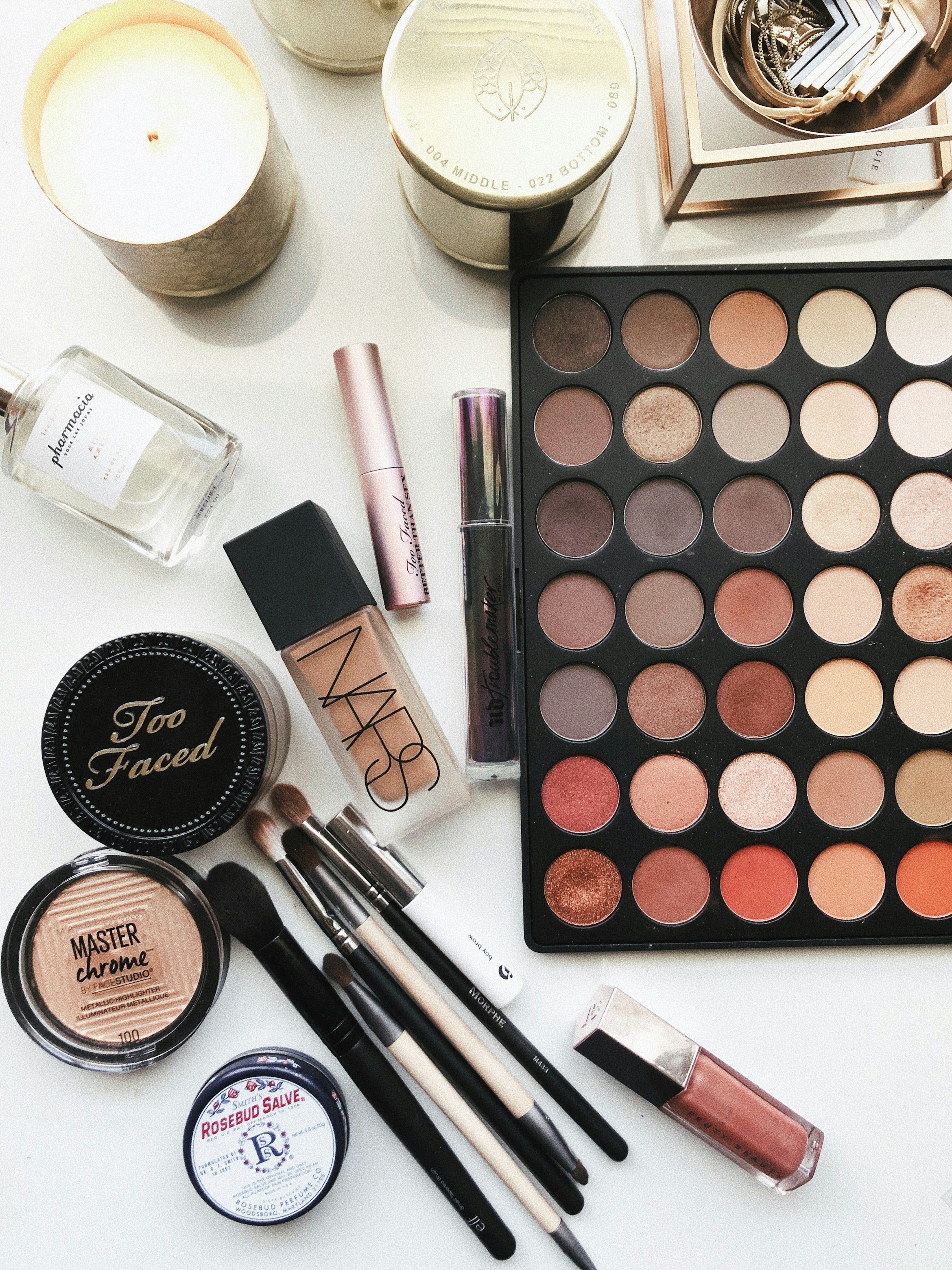Finding the perfect foundation that matches your skin tone can feel like an impossible task. With countless shades, formulas, and undertones to choose from, it’s no wonder many people struggle to find their ideal match. This comprehensive guide will walk you through everything you need to know to find your perfect foundation shade and formula.

Understanding Your Skin Undertone
The key to finding your perfect foundation lies in understanding your skin’s undertone. Your undertone is the subtle hue beneath your skin’s surface that remains constant regardless of sun exposure or seasonal changes.
The Three Main Undertones
- Cool Undertones: Pink, red, or blue undertones. Your veins appear blue or purple.
- Warm Undertones: Yellow, golden, or peachy undertones. Your veins appear green.
- Neutral Undertones: A balanced mix of warm and cool tones. Your veins appear blue-green.
Simple Tests to Determine Your Undertone
The Vein Test: Look at your wrists in natural light. If your veins appear blue or purple, you have cool undertones. If they look green, you have warm undertones. Blue-green veins indicate neutral undertones.
The Jewelry Test: Hold gold and silver jewelry against your skin. If gold looks better, you likely have warm undertones. If silver is more flattering, you probably have cool undertones. If both look good, you may have neutral undertones.
The White Fabric Test: Hold pure white and off-white fabrics near your face. If pure white looks better, you have cool undertones. If off-white or cream is more flattering, you have warm undertones.
Choosing the Right Foundation Shade
Once you know your undertone, selecting the right shade becomes much easier. Here’s how to approach foundation shopping:

Where to Test Foundation
Always test foundation on your jawline or neck area, not your hand or wrist. Your face and neck should match seamlessly. Test in natural light whenever possible, as store lighting can be misleading.
Foundation Shade Matching Tips
- Test three shades: one that looks perfect, one slightly lighter, and one slightly darker
- Apply the foundation and wait 10-15 minutes to see how it oxidizes on your skin
- Check the match in different lighting conditions
- The right shade should disappear into your skin
- Don’t try to change your skin tone dramatically with foundation
Understanding Different Foundation Formulas
Different skin types require different foundation formulas. Here’s what works best for each skin type:
For Dry Skin
- Liquid foundations with hydrating ingredients
- Cream foundations
- Dewy or luminous finishes
- Avoid powder foundations
For Oily Skin
- Oil-free liquid foundations
- Powder foundations
- Matte or semi-matte finishes
- Long-wearing formulas
For Combination Skin
- Medium coverage liquid foundations
- Satin or natural finishes
- Buildable formulas
- Oil-free options for T-zone control
For Sensitive Skin
- Mineral foundations
- Fragrance-free formulas
- Hypoallergenic options
- Foundations with minimal ingredients
Application Tips for Perfect Results
Even the perfect shade won’t look good without proper application. Here are professional tips for flawless foundation application:
Preparation is Key
- Always start with clean, moisturized skin
- Use a primer suited to your skin type
- Allow skincare products to fully absorb before applying foundation
Application Techniques
- Beauty Sponge: Dampen and squeeze out excess water. Bounce the sponge on your skin for an airbrushed finish
- Foundation Brush: Use stippling motions rather than wiping for even coverage
- Fingers: Warm the foundation between your fingers and press into skin for natural coverage
Common Foundation Mistakes to Avoid
- Choosing a shade that’s too light or too dark
- Ignoring your undertone
- Testing foundation only on your hand
- Using the wrong formula for your skin type
- Applying too much product at once
- Not blending down your neck
- Skipping primer
- Not setting your foundation with powder
Special Considerations
Seasonal Changes
Your skin tone may change slightly throughout the year. You might need a lighter shade in winter and a slightly deeper one in summer. Consider having two foundation shades to mix or alternate between seasons.
Coverage Levels
- Sheer Coverage: Evens skin tone while letting natural skin show through
- Medium Coverage: Covers most imperfections while maintaining a natural look
- Full Coverage: Covers all imperfections and creates a flawless finish
Professional Tips from Makeup Artists
- When in doubt, go slightly warmer rather than cooler
- Mix two shades if you can’t find the perfect match
- Consider getting color-matched at multiple brands
- Take photos in different lighting to check your match
- Don’t be afraid to ask for samples before purchasing
Conclusion
Finding the perfect foundation is a journey, not a destination. Take your time to understand your skin’s unique needs and don’t be discouraged if it takes a few tries to find your ideal match. Remember that the best foundation is one that enhances your natural beauty and makes you feel confident in your own skin.
With these expert tips and techniques, you’ll be well-equipped to find a foundation that not only matches your skin tone perfectly but also works harmoniously with your skin type and lifestyle. The perfect foundation match is out there waiting for you!
